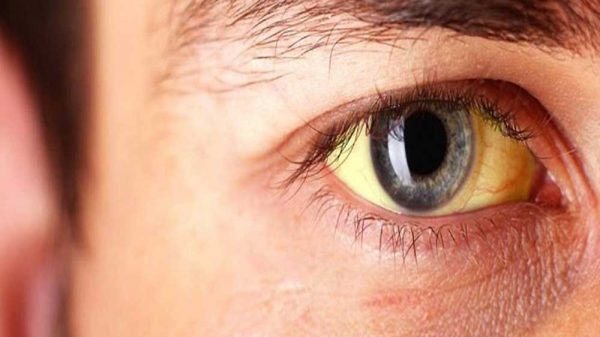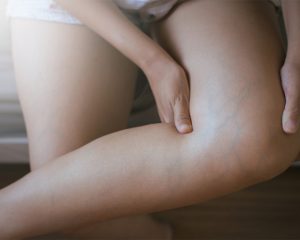Getting older makes the facial features look a little different due to sagging skin, laugh lines, jowls, and extra neck skin. Facelift procedures – medically referred to as rhytidectomy procedures – are designed to help reverse these changes and help to give the face a more lifted, youthful look. Most individuals, when they think of facelift procedures, think of a full facelift. But did you know that there are several types of facelifts? Different facelifts are designed to target different areas of the face.
If you are interested in lifting the area of your mouth, jawline, and chin, you will most likely want to undergo a lower facelift procedure. Keep reading to find out everything you need to know about undergoing a lower facelift procedure and how to support recovery.
Types of Face Lifts
Facelifts are cosmetic procedures that can help resolve the effects of aging. Before diving into the lower face lift, let’s first briefly go over the different kinds of facelifts.
An upper face lift will include a blepharoplasty, which helps remove excess fat and tissues around the eyes and helps the eyes appear more open. A blepharoplasty can also include an eyelid surgery, which can decrease puffiness in the upper eyelid and lower eyelid. An upper face lift may also include a brow lift and help raise the placement of the eyebrows.
A mid-face lift lifts the middle face area by lifting the cheeks through a procedure called the deep plane facelift. A mid-face lift may also address deep nasolabial folds and smooth out the appearance of wrinkles and excess tissue in this area.
The other main kind of face lift is the lower face lift. Keep reading below to find out how the lower face lift improves facial appearance.
What Exactly Does a Lower Face Lift Do?
A lower face lift is a facial rejuvenation procedure that gets rid of excess skin that has begun to wrinkle and droop as a result of the aging process. Undergoing a lower face lift can help reveal the jawline and get rid of laugh lines under the mouth. Because a lower face lift targets only one part of the face, it is sometimes called a mini face lift.
Depending on what you and your plastic surgeon decide, you may also undergo a neck lift in addition to the lower facelift.
Preparing for Lower Face Lift
Before undergoing a lower face lift, you will meet with your plastic surgeon to go over your concerns. The plastic surgeon will evaluate your face and listen to your concerns, before offering a treatment plan.
In the week leading up to surgery, you will likely be advised to avoid any medications and supplements that cause blood thinning, to reduce the risk of bleeding during the procedure. You will also be asked to avoid food and non-water beverages for 8 hours prior to surgery. Always follow all of your doctor’s guidelines for preparing for surgery, to help ensure that the procedure goes smoothly.
What to Expect During a Lower Face Lift
During a facelift procedure, you will be put under general anesthesia. As a result, you will be asleep and will be unable to feel or be aware of anything that’s going on. You will simply wake up when the procedure is over. A facelift procedure generally lasts several hours.
Your surgeon may use either traditional facelift incisions or less invasive incisions. A traditional facelift technique requires cuts around the hairline and ear, and may also involve fat transfer from different areas of the face. On the other hand, a less invasive facelift requires small incisions that are made near the temple area and around the front of the ear. Both techniques are effective, although larger incisions may allow for greater access to underlying muscles and pockets of excess fat, yielding more dramatic results.
After the surgery, you will be wheeled to the recovery room as you wake up from anesthesia.
What to Expect During Recovery
After facelift surgery, you can expect bruising and tightness for a couple of weeks. Swelling is also a normal part of the healing process and may last for several weeks. Recovery time may take up to 2 months, and each individual case will vary. Taking steps to promote healing is important during the recovery process.
How to Support Recovery After a Lower Facelift
Being equipped with strategies for healing helps you make a quick and successful recovery. Here are some of the best things you can do to protect your face as it heals.
1. Icing the Face
In the days following your facelift procedure, you will experience some significant bruising and swelling. You may be wondering how to reduce swelling in face immediately following the procedure. To reduce swelling in face, apply cold packs to the swollen area. Be careful not to apply ice directly to skin, and only hold the ice on your face for a few minutes at a time, to avoid irritating and damaging your skin.
2. Keeping Your Head Elevated
When you are lying down, it’s best to keep your head elevated above your chest. This is because lying flat can encourage more blow flow to the head, which can increase blood pressure and swelling in the face. When you are resting or sleeping, comfortably prop up your head and neck with pillows.
5. Avoiding Strenuous Exercise
Strenuous exercise should be avoided for at least a few weeks following cosmetic surgery. Strenuous exercise temporarily increases blood pressure in the head, which can strain your healing blood vessels and cause bleeding and swelling. Your doctor will let you know when it’s safe to engage in vigorous exercise again.
6. Eating Healthy Foods
The foods you eat can make a significant difference in the healing process. Plus, eating healthy foods will help you maintain your skin’s new youthful look and vibrancy for longer. Here are a few of the best foods to eat when you are recovering from a lower face lift surgery:
- Protein: The essential amino acids in dietary protein are vital for supporting the healing of soft tissue and muscle in the face and neck. You can get optimal ratios of essential amino acids from high-quality protein sources like nonfat Greek yogurt, chicken breast, low-fat cheese, and salmon.
- Fruits and veggies: The micronutrients in fruits and vegetables support the immune system and help expedite the wound-healing process. Kale, spinach, sweet potatoes, blueberries, and strawberries are examples of nutrient-rich post-surgery foods.
- Omega-3 fatty acids: Omega-3 fatty acids support the immune system, lower levels of systemic inflammation, and support a speedy recovery. Reach for foods like salmon, mackerel, sardines, walnuts, chia seeds, and flaxseeds to get plenty of omega-3 fatty acids.
7. Managing Pain
It’s important for the recovery process to be as painless as possible, to allow you to rest and focus on healing. If you are experiencing significant pain, your surgeon will prescribe stronger painkillers to help you manage the initial pain. After a few days, you will be able to transition to over-the-counter painkillers like Tylenol. Avoid nonsteroidal anti-inflammatory medications, since they can increase the risk of excess bleeding.
Things to Keep in Mind
It’s important to keep in mind that there are numerous kinds of facial rejuvenation procedures. Upper, mid, and lower face lifts are not the only facial cosmetic procedures available, and plastic surgeons are able to perform a variety of surgical techniques to ensure that the results address your specific needs. Although none of us are immune to the effects of aging, facial skin and structures are highly variable and no two people age exactly the same. Your facial plastic surgeon will be able to recommend the best procedure to address your concerns.
Additionally, there are non-surgical procedures like botox and dermal fillers that only require local anesthesia and help you achieve facelift results without undergoing extensive surgery.
Final Results
After healing is complete, the final result should include a rejuvenated jawline, softer lines, and a more youthful appearance. Taking care of your skin, staying hydrated, eating high-quality proteins, and eating plenty of fruits and veggies can help you sustain your results for as long as possible.
Lower Face Lift: Conclusion
Facial aging is a normal process. Facelifts are a type of plastic surgery that can help fight against loose skin and laxity associated with aging, which helps improve facial appearance. Following steps for supporting the healing process can help you make a full and successful recovery while also helping you sustain results. Reducing swelling, avoiding strenuous activity, and eating lots of protein and anti-inflammatory foods can ensure that your facelift affords the best results possible.























